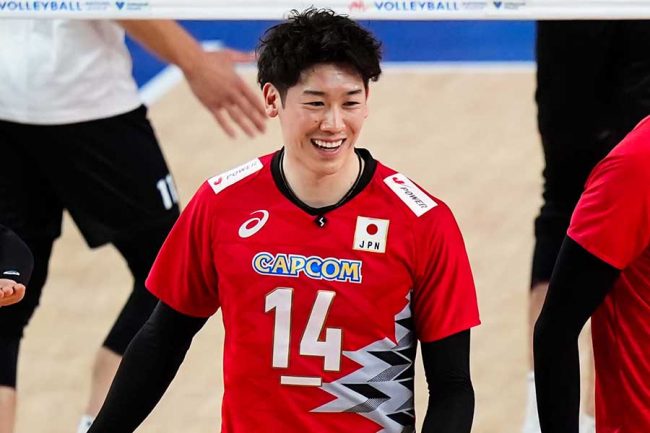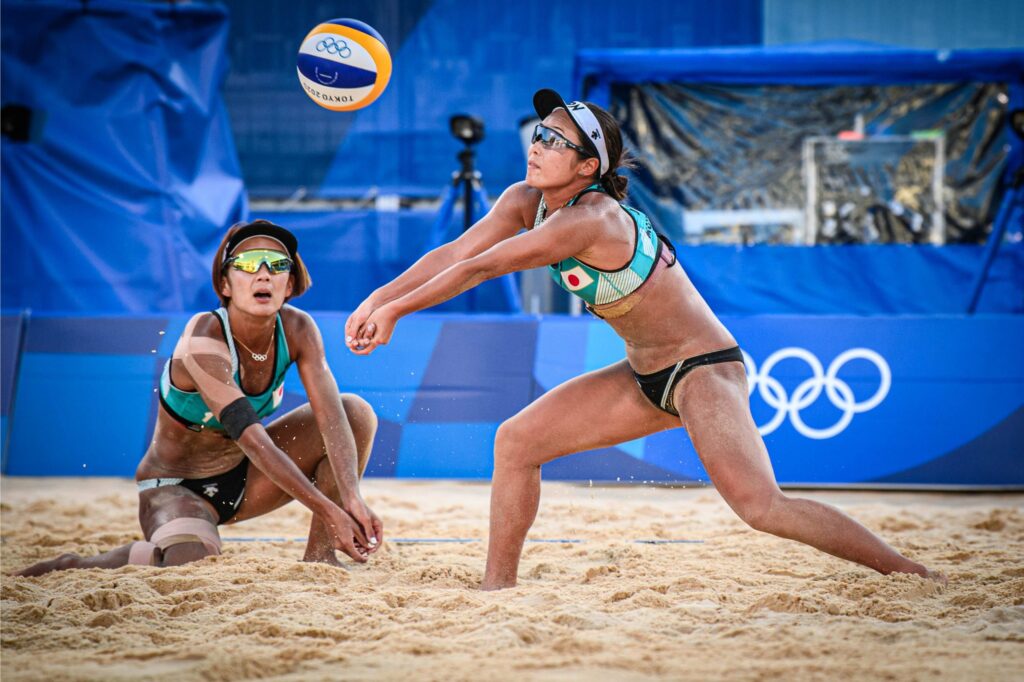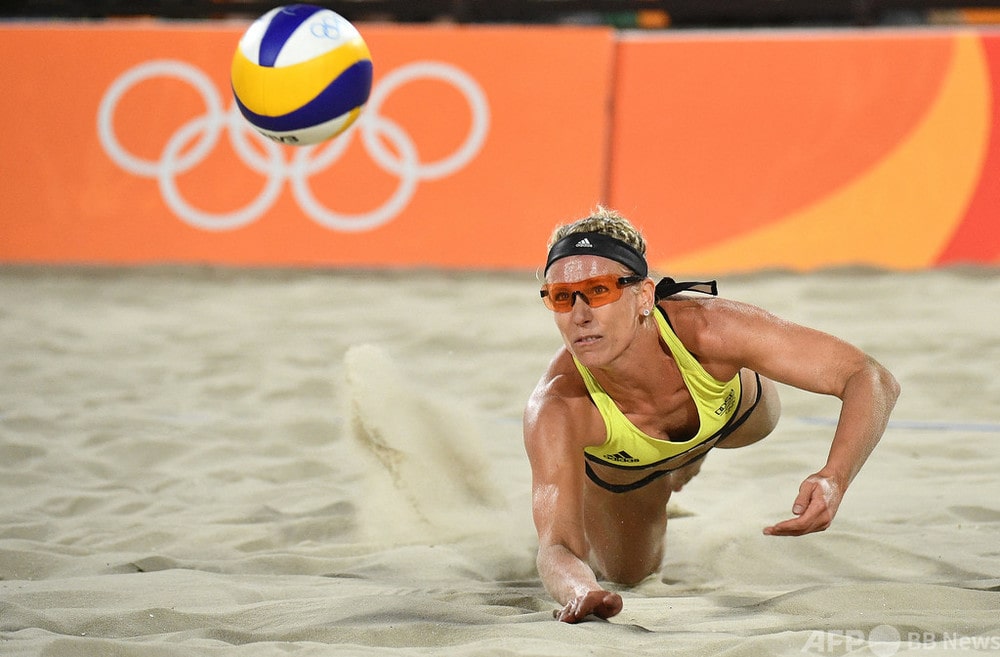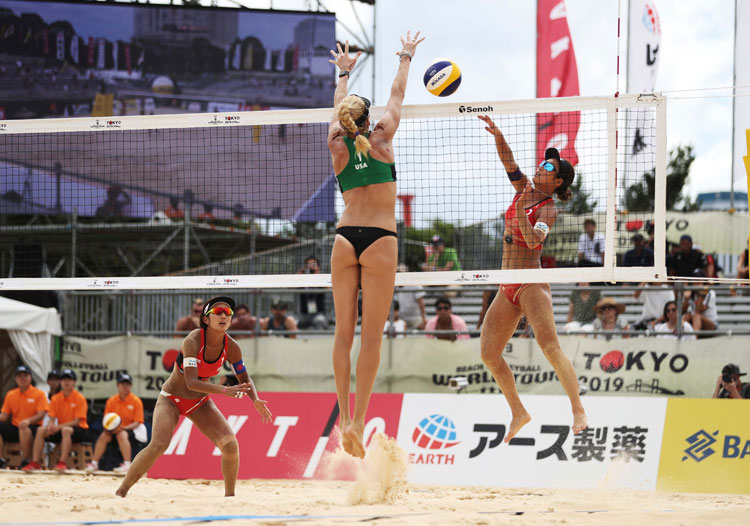
As a beach volleyball player, jumping ability is essential to gaining an advantage in the game.
In order to successfully execute powerful spikes and blocks, you need to not only hone your technique, but also push your physical abilities to their limits.
However, the question many athletes face is, “How exactly can I improve my jumping power?”
This article provides scientifically proven training methods and practical techniques for all beach volleyball players looking to improve their jumping ability.
Let’s take a look at how increasing your jumping power will change your playstyle and improve your performance in matches.
目次
- 1 Need to improve jumping power in beach volleyball
- 2 Jump strength training starting from the basics
- 3 Tips for jumping on the beach
- 4 Make a difference with your technique! Tips for jumping from a run-up
- 5 Quick results – success stories and training programs
- 6 How to use your upper body to create height
- 7 summary
Need to improve jumping power in beach volleyball
Improving jumping power in beach volleyball has a major impact on the player’s performance.
In this sport, techniques that involve jumping, such as spikes, blocks, and serves, are important elements that determine the outcome of a match.
Players with high jumping ability can attack from a more advantageous position, increasing their chances of breaking through the opposing team’s defense.
Also, on the defensive side, jumping high makes it easier to block the opponent’s powerful attacks and protect your team’s scoring opportunities.
Height advantage in sports
In sports in general, height advantage works to your advantage in many situations.
Beach volleyball courts are covered with sand and the ground is unstable, so jumping power is more important than in regular volleyball.
Jumping effectively on sand requires specific strength and technique, and this differentiates athletes from each other.
-
Attack Versatility – Players with good jumping ability can attack from a high position above the net, making it easier to overcome opponent blocks. This allows you to diversify the angle and speed of your spikes and perform attacks that are difficult for your opponent to predict.
-
Boost your defense – Similarly, when it comes to defense, jumping higher can narrow the range of your opponent’s attacks and increase your block success rate. This will lead to a significant improvement in the team’s defensive ability.
-
Psychological advantage – In addition to physical advantage, high jumping power can put psychological pressure on your opponent. By showing that your team has high jumping ability, you can lower the morale of the opposing team and increase your team’s confidence.
Importance of training
Strength training, plyometrics (training using explosive movements), and technical exercises are important for improving jumping power.
It is possible to improve your jumping power by following a proper training program and practicing continuously.
Also, improving your jumping power is not an instant result and requires time and effort, so it is important to continue with patience.
For beach volleyball players, jumping is not just a skill, it is a key element to victory.
Effective jumping strength training not only improves technical skills, but also contributes to improving the performance of the entire team.
Through sustained effort and the right training approach, beach volleyball players can push their limits and achieve high jumps in competition.
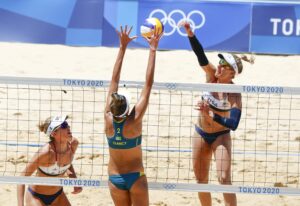
Jump strength training starting from the basics
Strength training and daily habits are very important for improving jumping power.
These are interrelated, and by properly combining both, it is possible to significantly improve your jumping power.
Effective muscle training method
-
Strengthen your lower body – In order to improve your jumping ability, you especially need to strengthen your lower body. It’s important to start with basic strength exercises like squats, lunges, and deadlifts and gradually increase the weight. These exercises will strengthen your thigh, calf, and buttock muscles, increasing your explosive power when jumping.
-
Plyometrics – Plyometrics (jumping training) is an effective way to develop explosive power. These include box jumps, skips, and tuck jumps, which improve muscle reaction speed and power at the same time.
-
Core Training – A strong core is essential for stability and power transfer when jumping. Strengthen your core muscles with exercises like planks, side planks, and Russian twists.
The importance of daily habits
-
Nutrition – Powerful jumps require proper nutrition. Protein intake is especially important to support muscle recovery and growth. Also, make sure you have a balanced intake of carbohydrates and healthy fats to maintain your overall energy levels.
-
Rest – Adequate rest is necessary for muscle growth and recovery. Adequate sleep allows your body to recover from training fatigue and prepare for the next training session.
-
Flexibility – Increasing your flexibility is also important for improving your jumping ability. Stretching, yoga, and other exercises can help reduce your risk of injury and increase your range of motion by increasing your muscle flexibility.
Training to improve jumping power is not a quick fix. It requires continuous effort and the right approach.
The key to achieving your goals is to start with basic strength training, gradually increase the intensity of your training, and pay attention to nutrition, rest, and flexibility in your daily life.
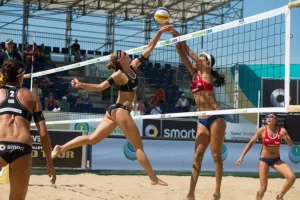
Tips for jumping on the beach
Jumping on a sandy beach is different from jumping on solid ground, and requires specific skills and tricks.
Sand is unstable and it is difficult for force to be transmitted directly to the ground, so it is important to be aware of the following points in order to jump efficiently.
1. Lower body strength
- Strength training : To improve your jumping ability on the beach, you first need to strengthen your lower body strength. Do exercises such as squats and calf raises on a regular basis to develop the basic strength necessary for jumping.
2. Foot placement
- Wide foot width : When jumping on a sandy beach, it’s a good idea to position your feet a little wider. This makes it easier to balance on unstable sand.
3. Ideas for run-up
- Short run-up : A sandy beach absorbs more energy than hard ground, so a long run-up can be counterproductive. Make a run-up with short, fast steps to efficiently accumulate power for the jump.
4. How to use your upper body
- Arm swing : Increase the momentum of your jump by swinging your arms. The backswing in particular plays an important role in jumping on the sand.
5. Landing technique
- Land softly : When landing on a sandy beach, remember to use your knees softly to absorb the impact. Form when landing is very important to prevent injury.
6. Repeat practice
- Practice : In order to jump effectively on the beach, it is essential to practice on the beach. By getting used to the feel and movement of the sand, you can improve your performance when jumping.
Jumping on a sandy beach requires adapting to a unique environment.
By keeping the above points in mind and practicing repeatedly, you can improve your performance in sports played on the sand such as beach volleyball.
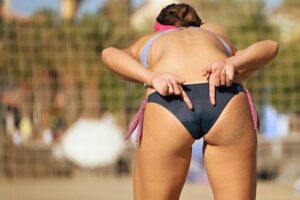
Make a difference with your technique! Tips for jumping from a run-up
In order to maximize your jumping power, jumping technique from the run-up is important.
Here, we will explain how to run up, the importance of the backswing, and how to use your upper body.
How to run up
-
Run-up length and speed : The run-up is a pre-jump preparation and creates the speed and force needed for the jump. It is important that the run-up is neither too short nor too long; 3 to 4 steps is usually ideal. Start slowly and accelerate just before the jump.
-
Foot usage : The last two steps of the run-up are especially important and typically follow a “right-left-jump (for right-handed)” rhythm. Take a big step on the last step to maximize your strength for the jump.
Importance of the backswing
The backswing is a technique in which you swing your arms back and use the recoil to increase the height of your jump.
This action creates coordination throughout the body and strengthens the upward force during the jump.
-
Arm swing : At the end of the run-up, swing your arms back. This movement directly supports the height of the jump, so it must be done powerfully and smoothly.
-
Use recoil : Use the recoil created by raising your arms to push your body upward. The key here is to raise your arms quickly and forcefully.
How to use your upper body
Upper body posture is also very important when jumping. By using your upper body properly, you can increase your jump efficiency and jump higher.
-
Maintain your posture : Keep your balance when jumping by keeping your back straight and leaning your upper body slightly forward. This allows for a smooth transition from run-up to jump, ensuring both height and distance.
-
Role of the arms : In addition to the backswing mentioned above, you can also swing your arms upwards to jump even higher. Additional height can be gained by maximally extending your arms at the top of your jump.
Repetitive practice is essential to mastering these techniques. Practicing with correct form will improve your jumping ability, which will greatly contribute to your beach volleyball performance.
It takes time to improve your jumping power, but by paying attention to techniques such as run-up, backswing, and how to use your upper body, you can increase your jumping power efficiently.
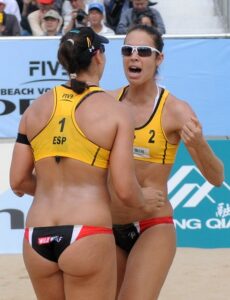
Quick results – success stories and training programs
A training program that many athletes have followed is an example of how they have improved their jumping ability in a short period of time.
Here we introduce effective training programs along with success stories.
success story
- Case 1 : Professional basketball player A improved his vertical jump by 10cm over a three-month period in the offseason. His training program was a combination of weight training, plyometrics, and sprints.
- Case 2 : University volleyball player B succeeded in increasing his jumping power by 8 cm through a 6-week intensive training program. Her training primarily focused on plyometrics and core strengthening.
Recommended training program
-
Combination of weight training and plyometrics : To effectively improve jumping power, it is important to use weight training to strengthen muscles and plyometric training to convert them into explosive movements. Combine your workouts 3-4 times a week and also give your muscles time to rest and recover.
-
Sprints : Short distance sprints can help improve lower body power. Sprinting develops the explosive power and speed needed to improve your jumping ability.
-
Core Training : A strong core helps with stability and power transfer during jumps. Aim to strengthen your core by incorporating exercises such as planks and Russian twists.
-
Proper nutrition and rest : In addition to training, proper nutrition and sufficient rest are also essential for improving jumping ability. Make sure to eat a nutritionally balanced diet with a focus on protein and get 7 to 8 hours of quality sleep.
If you follow these training programs consistently, you can expect noticeable improvements in your jumping power even in a short period of time.
As can be seen from success stories, the key is to select a program that meets individual needs and implement it in the correct form.
If you are aiming to improve your jumping ability, we recommend consulting with a professional trainer or coach to create a program that suits your physical condition and abilities.
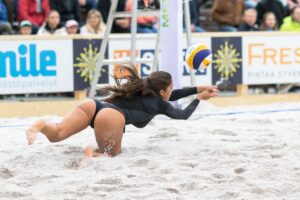
How to use your upper body to create height
How you use your upper body is an important factor in creating height when spiking in sports such as beach volleyball.
By using your upper body effectively, you will be able to jump higher and hit powerful spikes.
Here, we will explain in detail the state of the upper body during spikes and its effects.
arm swing and backswing
When hitting a spike, arm swing is an important factor that determines the height of the jump.
When transitioning from run-up to jump, forcefully swing your arms back (backswing) to apply upward force to your body.
By jumping using this recoil, you can hit the ball from a higher position.
Body tilt and core usage
The slope of your upper body also affects your jump height. By leaning your upper body forward when jumping, your center of gravity moves forward, allowing you to jump more powerfully.
This movement also uses your core muscles, and core strength supports the stability and height of your jump.
upper body relaxation
It may seem surprising, but it is also important to relax your upper body when jumping.
If your upper body and shoulders are stiff and tense, your movement will be restricted and your jumping ability may be reduced.
In order to smoothly perform movements including arm swings, it is desirable to remain relaxed and flexible.
Arm position when spiking
Finally, arm position when spiking also contributes to the height and power of your jump.
Efficient use of the arms is required to fully extend the arms at the top of the jump and apply maximum force to the ball.
The arm should swing down towards the ball with maximum speed at the moment of striking the ball.
Effective upper body usage greatly contributes not only to the height of your jump, but also to the power and accuracy of your spike.
It is important to consciously incorporate these elements into your daily training and practice repeatedly.
By mastering the correct way to use your upper body, you will be able to perform at a higher level in sports such as beach volleyball.
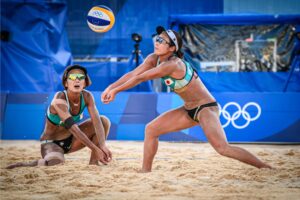
summary
Improving jumping power is essential for high performance in beach volleyball and other sports.
In order to achieve results in a short period of time, it is important to comprehensively understand and apply effective muscle training methods, daily habits, jump techniques from the run-up, and how to use your upper body.
- Jump training starts from the basics : It’s all about a combination of weight training, plyometrics, core training, and proper nutrition and rest.
- Make a difference with your technique : How you run up, the importance of your backswing, and how you use your upper body will greatly affect the height of your jump. In particular, relaxing your backswing and upper body will allow you to jump higher and more efficiently.
- Jumping on a sandy beach : Jumping on a sandy beach requires special tricks. Strengthening your lower body, improving your run-up, and using your upper body appropriately are the keys to overcoming the instability inherent to sandy beaches.
- Success stories and training programs : Find real-life examples of people who have improved their jumping ability in a short period of time, as well as recommended training programs to help you get on the path to achieving your goals.
In order to improve your jumping power, it is important to incorporate these elements comprehensively and train continuously.
Choose a program that suits your individual needs, be sure to follow the correct form, and aim to improve your abilities while taking in the advice of a professional trainer.
